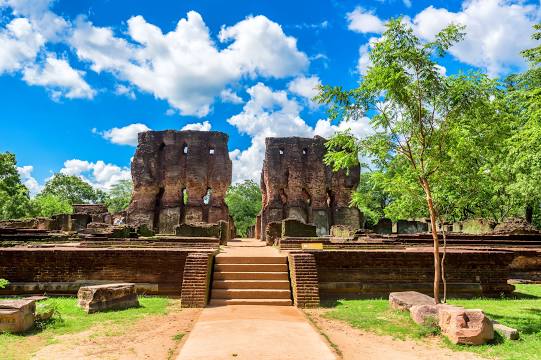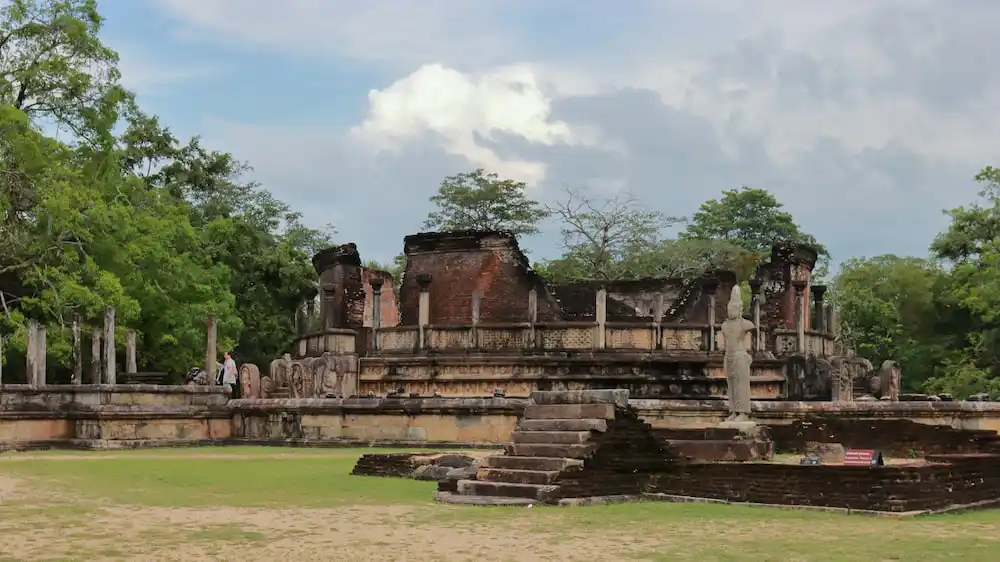
Poḷonnaruwa, also referred as Pulathisipura and Vijayarajapura in ancient times, is the main town of Polonnaruwa District in North Central Province, Sri Lanka. The modern town of Polonnaruwa is also known as New Town, and the other part of Polonnaruwa remains as the royal ancient city of the Kingdom of Polonnaruwa.
The Gal Vihara, and known originally as the Uttararama, is a rock temple of the Buddha situated in the ancient city Polonnaruwa, the capital of the ancient Kingdom of Polonnaruwa, now present-day Polonnaruwa, in North Central Province, Sri Lanka. It was fashioned in the 12th century by King Parakramabahu I. The central feature of the temple is four rock relief statues of the Buddha, which have been carved into the face of a large granite gneiss rock. The images consist of a large seated figure, another smaller seated figure inside an artificial cavern, a standing figure, and a reclining figure. These are considered to be some of the best examples of ancient Sinhalese sculpting and carving arts, and have made the Gal Vihara the most visited monument at Polonnaruwa. The images of Uttararama follow a different style from the images of the previous Anuradhapura period, and show some significant differences. The identity of the standing image is subject to a certain amount of dispute among historians and archaeologists, some of whom argue that it depicts the monk Ananda rather than the Buddha.

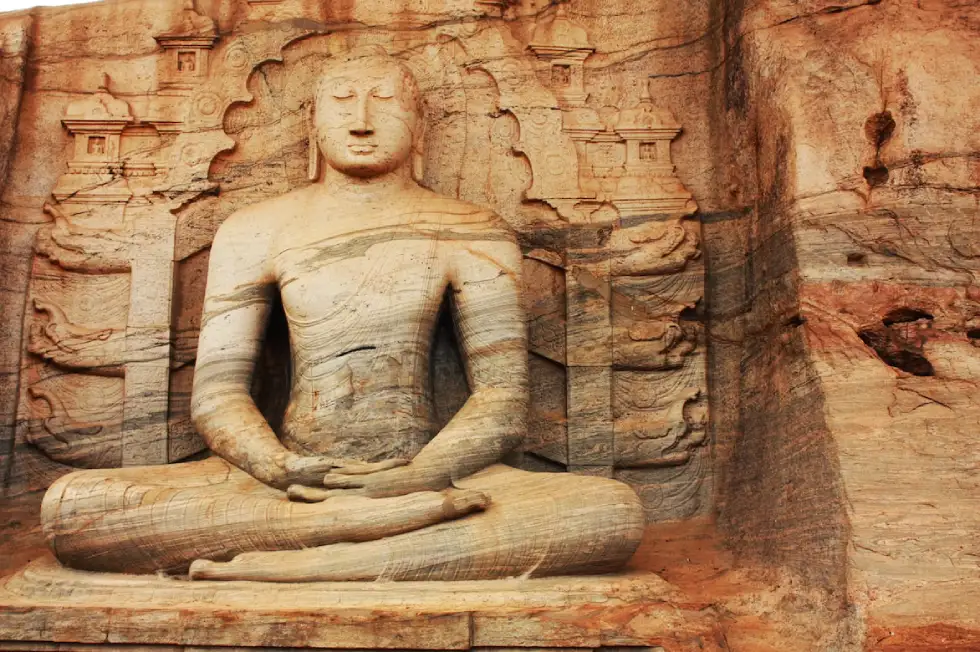
The Polonnaruwa Vatadage is an ancient structure dating back to the Kingdom of Polonnaruwa of Sri Lanka. It is believed to have been built during the reign of Parakramabahu I to hold the Relic of the tooth of the Buddha or during the reign of Nissanka Malla of Polonnaruwa to hold the alms bowl used by the Buddha. Both these venerated relics would have given the structure a great significance and importance at the time. Located within the ancient city of Polonnaruwa, it is the best preserved example of a vatadage in the country, and has been described as the “ultimate development” of this type of architecture. Abandoned for several centuries, excavation work at the Polonnaruwa Vatadage began in 1903. Built for the protection of a small stupa, the structure has two stone platforms decorated with elaborate stone carvings. The lower platform is entered through a single entrance facing the north, while the second platform can be accessed through four doorways facing the four cardinal points. The upper platform, surrounded by a brick wall, contains the stupa. Four Buddha statues are seated around it, each facing one of the entrances.
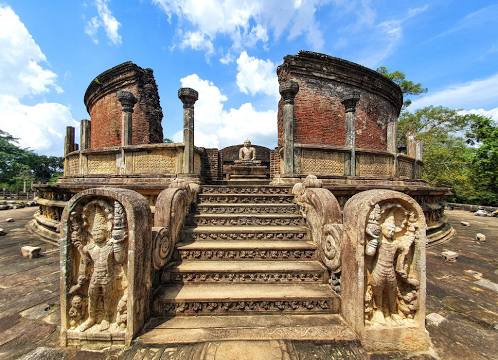
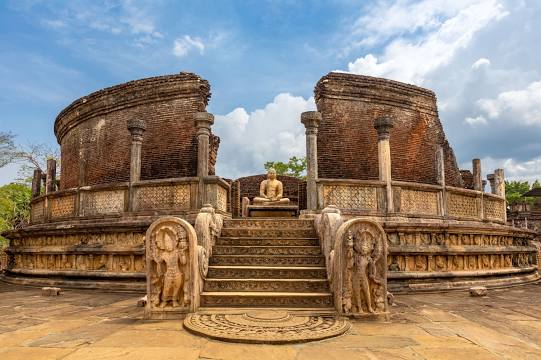
Hatadage is an ancient relic shrine in the city of Polonnaruwa, Sri Lanka. It was built by King Nissanka Malla, and had been used to keep the Relic of the tooth of the Buddha. The Hatadage had been built using stone, brick and wood, although only parts of the brick and stone walls now remain. It appears to have been a two-storey structure, but the upper storey has now been destroyed. Three Buddha statues carved out of granite rock are located within a chamber of the shrine.
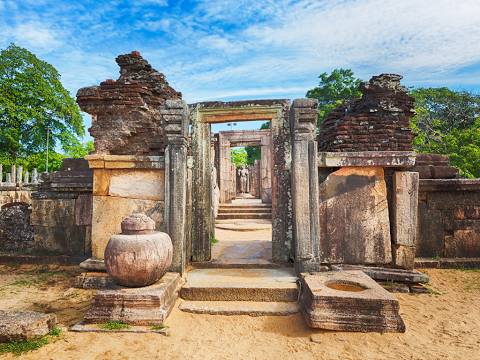
Rankoth Vehera is a stupa located in the ancient city of Polonnaruwa in Sri Lanka. The stupa was built by Nissanka Malla of Polonnaruwa, who ruled the country from 1187 to 1196. The Rankoth Vehera has been built according to the tradition of the stupas of the Anuradhapura Maha Viharaya and bears a close resemblance to Ruwanwelisaya. In fact, a stone inscription situated close to the stupa even identifies it by the name “Ruwanweli”. However, it has later come to be known by the currently used name, Rankoth Vehera. In Sinhalese, ran means gold, kotha is the name given to the pinnacle of a stupa, and vehera means stupa or temple. Thus, the name Rankoth Vehera can be roughly translated to English as “Gold Pinnacled Stupa”. Along with the Kiri Vehera, it is one of the most revered stupas in Polonnaruwa.
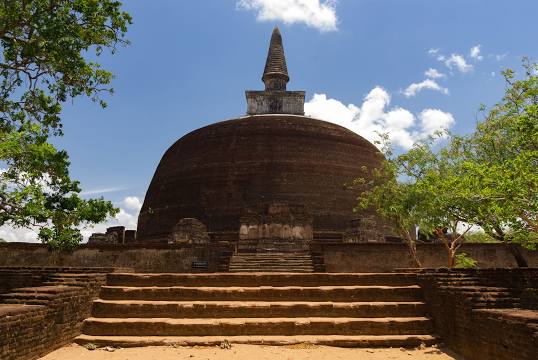
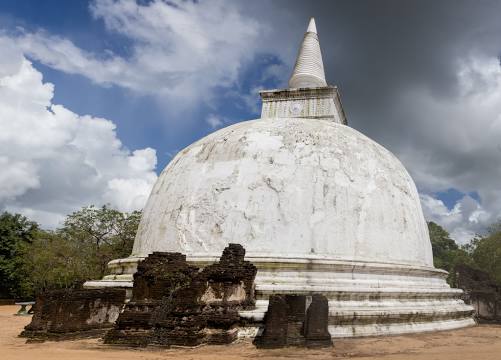
Nissanka Latha Mandapaya is a unique structure in the ancient city of Polonnaruwa in Sri Lanka. A màndapa is a pillared structure that is open on all sides and protects the person inside from the sun with a roof. By definition, as of the 20th century, mándapas, as temporary structures, are built inside a house or a building and serve as recitation platform during remembrance ceremonies for the dead. Built by King Nissanka Malla and named after him, it is located near the western entrance of the Dalada Maluva, the area that contains the oldest and most sacred monuments in the city. A nearby stone inscription identifies this as the building used by Nissanka Malla to listen to pirith. The structure is an elevated stone platform with a number of stone columns and surrounded by a low stone wall. These stone columns are the unique feature about the Nissanka Latha Manadapaya, since they are carved in a manner that is found nowhere else in the country. The eight granite columns are arranged in two rows, with four in each row. Presumably used to support a roof, each of them is approximately 8 feet 4 inches in height.
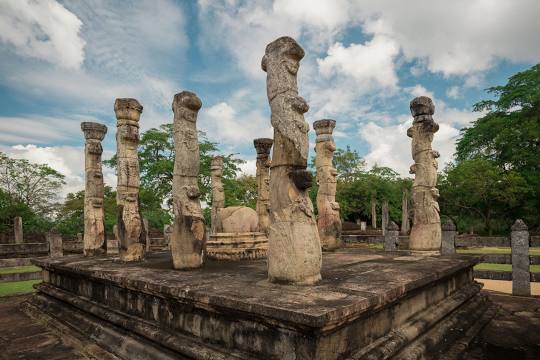
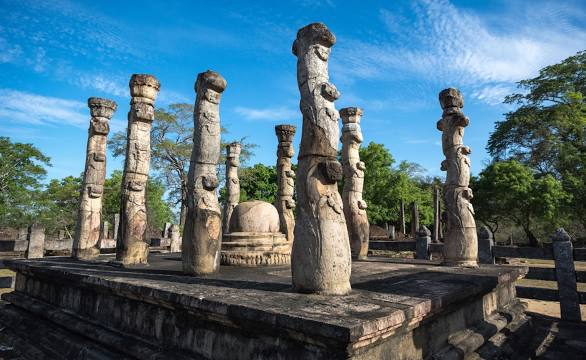
The circular building of Dalada Maluwa, also known as Terrace of the Tooth Relic of Lord Buddha, Dalada Maluwa is an elevated area in the Polonnaruwa Sacred City which many Buddhist buildings are situated.
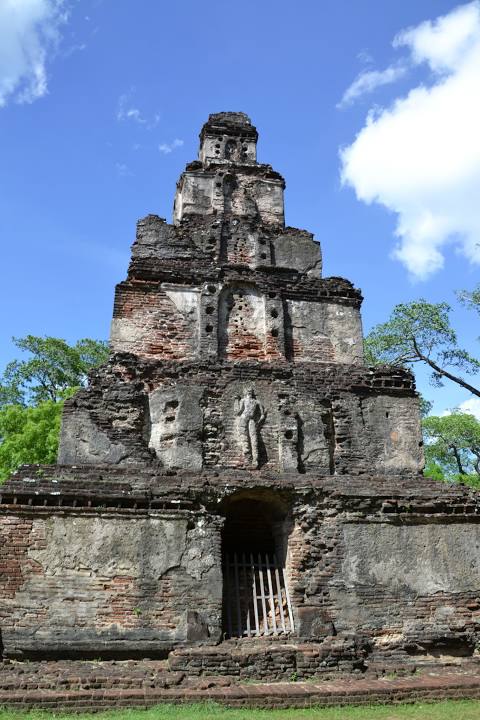
Thivanka Pilimage was built by King Parakramabahu (1153-1186) and since the 8 meter tall image of Buddha has been curved in 3 places, The Thivanka image house is most noteworthy for its paintings of the Polonnaruwa Period.
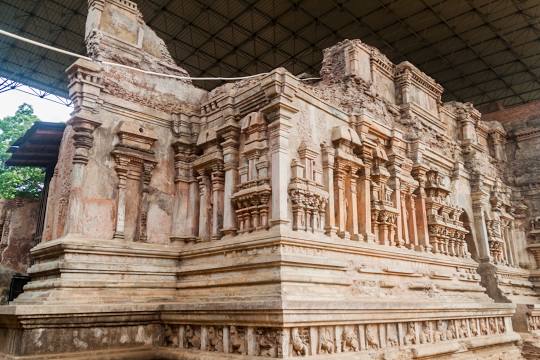
Constructed under the reign of King Mahaparakram Bahu between the years 1153 to 1186, the striking Royal Palace stands as the emblem of grandeur in the ancient city of Polonnaruwa, Sri Lanka.
